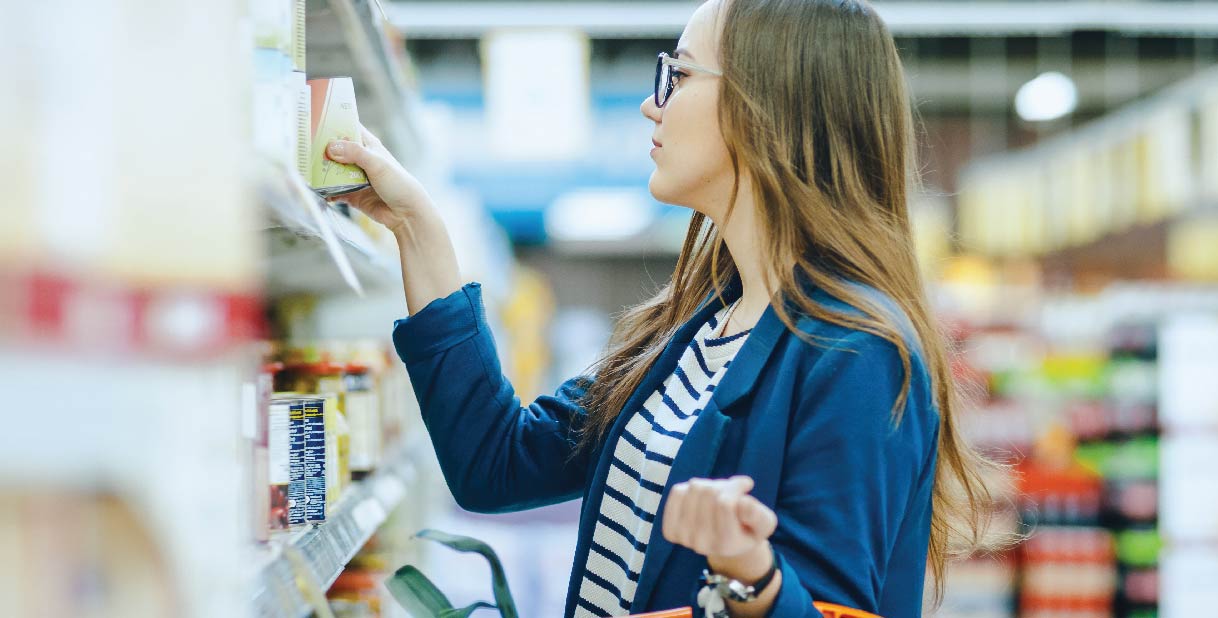The Impact of the Growth of Private Label Brands
Posted: 06/23/2021 | Author: Jim Lochner for Creatives On Call

Once upon a time, private label products were associated with low standards and low prices. Consumers only purchased them to save money. Not anymore. Early in the pandemic, when many consumer packaged goods (CPG) brands disappeared from store shelves due to panic buying and pantry hoarding, shoppers were forced to turn to private-label goods.
To change that consumer mindset takes strategy, creativity and drive. If you're looking for people to get you there, we have teams waiting for you.
The good news? The US CPG industry grew 10.3% in 2020 to $933 billion, with private label CPGs accounting for 18% of the overall growth. The most profitable retail channels for private label products were mass merchant stores with sales of $77.8 billion, followed by supermarkets with $73.1 billion in sales. Household paper and plastics products generated the highest sales in supermarkets, while baby food showed outstanding growth as well. Smaller CPGs like alcohol, frozen food, and breakfast also soared as at-home eating (and drinking) became the norm. Private label brands dominate the single-cup coffee segment with more than $1 billion in sales, a 7.3% increase. Health and beauty, personal care, and general health and wellness also saw significant growth. Even private label auto parts are on the rise.
Food, Glorious Food
For the fourth consecutive year, private label in grocery outpaced name brands in 2020, with year-over-year sales growth of 13.7% compared to 12.9%. Supermarket private label sales increased 13.2% in 2020 by $8.5 billion to a record $27.3 billion.
Sure, the pandemic helped spur the growth. But Big box retailers like Walmart, Target, Kroger, and Amazon have been expanding their private-label brands in recent years. Trader Joe’s has thousands of private label products, Kroger’s Simple Truth organic food line is now a $2 billion brand, and Target’s Good & Gather grew to a billion-dollar brand in less than a year.
The pandemic didn’t slow down the release of new private label products either. Albertsons, with a brands portfolio worth $14 billion consisting of 12,000 items across 500 categories, introduced 650 items in its Own Brands line last year and reported its private-label penetration reached more than 25%. Costco’s Kirkland Signature private label products accounted for 32% of the company’s total sales, driven primarily by grocery, health and beauty products, and home cleaning goods. Kroger’s Simple Truth line generates over $2 billion a year and accounts for more than 30% of the company’s sales volume.
The Rise of the Premium Private Label
Retailers are now beginning to launch new lines of premium private label brands that serve as stand-alone products instead of simply being “copycat” alternatives to higher-priced name brands. Responding to changing consumer attitudes concerned with the overall effect a product has in their lives and on the planet, these premium products focus on factors like quality ingredients and sustainability. Over the past year, retailers like Kroger have expanded their selection of plant-based private label offerings, while Albertsons recently unveiled a line of sustainable wines and has also rolled out compostable nonfood items under its Open Nature brand. Marketing messaging for these premium labels promotes how the products are made, letting pricing take a backseat. This allows retailers to leverage social media exposure and digital advertising to reach the right customers.
Optimizing Your Private Label Strategy
The benefits of private labels are many, including better cost and price management, brand loyalty, and higher profits. But it’s not as simple as “if you build it, they will come.” Private label products need to be supported by an underlying strategy to ensure they provide good value to consumers while still providing financial wins to retailers.
Your private label strategy should be firmly rooted in data. Analyze the most popular categories, frequent purchases, and preferences to deliver on quality and create products that customers love. By comparing this information to national brand expenses, you can tailor your strategy to provide the most significant cost savings while also delivering on quality.
* * *
While 45% of consumers said price was the primary reason for switching to private labels, 58% now believe private labels are a good alternative to national brands, and 70% say they provide similar or better quality. Almost one-fifth of consumers rely more on private-label products than before the pandemic, and 52% said they expect to continue purchasing private-label brands once the pandemic subsides.
Even though two-thirds of consumers say they’re shopping both in stores and online, they often feel there’s a disconnect between the two channels. Private labels reported lower numbers in online CPG sales than other categories of manufacturers. Online merchandising is an area ripe for exploring, and we can help.
Creatives On Call has experienced creatives standing by to help you with private label strategizing, design and production, digital technology, and more. Give us a call!
____________
This is a time for marketers to step up to the challenge and get creative in meeting current demands and behavior changes. Creatives On Call supports your business through this. Contact us here. We have Marketing professionals ready to start in areas including:
• Strategy & Advisory
• Design and Production
• Content Creation & Management
• Customer Engagement & Experience
• Learning & Knowledge Management
• Digital Technology & Transformation
